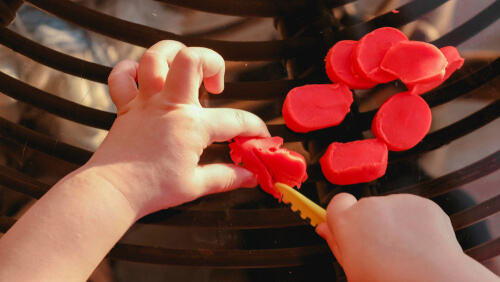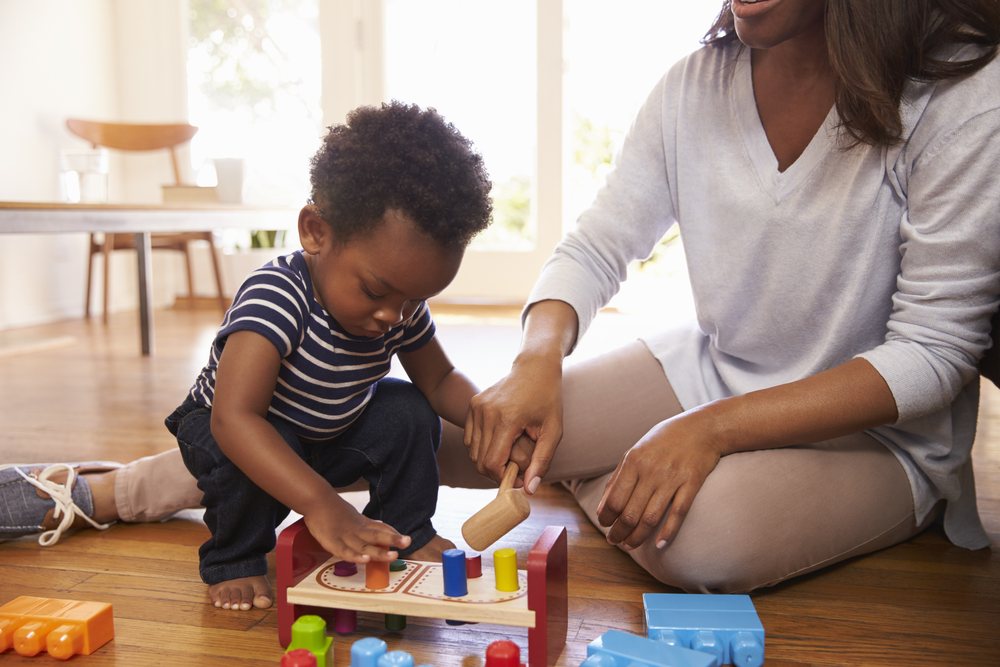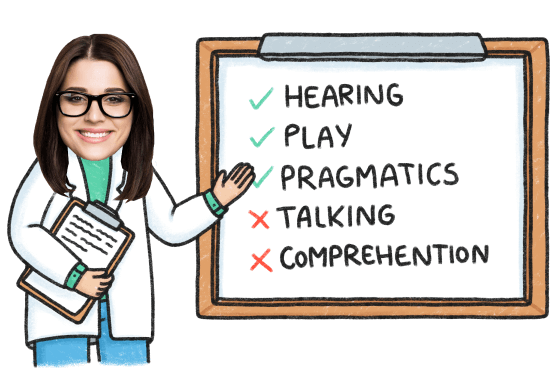Fine Motor Development in Toddlers
Jan 19, 2022 Amazingly, kids begin to develop fine motor movements as young as three-months-old! From three months until your child is a toddler, fine motor skills development will continue to progress.
Your child will progress from opening and closing their hand to writing their name with a pencil in preschool. But how do children develop fine motor skills?
In This Article
What are Fine Motor Skills?
Fine motor skills consist of the muscles and tendons in the hand and wrist used for a variety of everyday tasks related to self-care, eating, and writing. Such skills requiring fine motor movement include:
- Dressing with zippers, buttons, and ties;
- Brushing and flossing teeth;
- Writing, drawing, and painting;
- Using scissors;
- Eating with a fork, spoon, and knife;
- Drinking from a bottle, sippy cup, or cup.
All of these skills will develop for your child over time as his or her fine motor movement improves well beyond the toddler years. While most babies can tighten and relax their hands and shake a rattle by three months old, not all children develop at the same rate. Each child develops naturally at his or her own rate with fine motor movement. There is no good or bad development, just your own child’s personal development.
If you are concerned about your child’s fine motor development by the time they have reached preschool age, ALWAYS talk to your child’s pediatrician about it. Developmental coordination disorders affect 5 to 6 percent of school-aged children. Sometimes, a delay in fine motor development could signal a developmental coordination disorder. Here are some skills to keep in mind for working on fine motor skills.
Some Signs of a Developmental Coordination Disorder
- Trouble holding a writing utensil and using scissors
- Dropping objects frequently
- Difficulty holding objects like a toothbrush, spoon, and fork
- Inability to tie their shoes
To keep track of fine motor skills for your child, it’s a good idea to be aware of the average fine motor development milestones according to age.
Between the Age of 3 to 6-months-old
- Bring their hand to their mouth
- Open and close hands to make a fist
- Hold hands together
- Move a toy between their hands
- Hold and shake a toy with both hands (not just one hand)
From 6 to 12-months-old
- Start to grasp objects with a ‘raking’ motion
- Clench items with their hand
- Grasps a toy with two hands
- Points with their index finger
- Feeds self with finger foods
- Starts to grasp items using ‘pincer grip’ (thumb and index)
- Bangs objects together
- Holds toys one-handed
While it may seem like fine motor skills have developed quickly over a year, your child is just getting started! Once your child hits the one-year mark and beyond, those early fine motor skills develop into more complicated skills to help fuel independence with self-care tasks.

Between 12 and 24-months-old
- Build a tower using blocks
- Draw or scribble on paper
- Use a spoon for eating
- Turn one book page at a time
- Use a pincer grasp to hold a crayon
From 2 to 3-years-of-age
- Wash hands
- Use a spoon and fork for eating
- Zip and unzip clothes
- String beads on a thread
- Turn a doorknob
Between 3 and 4-years-old
- Button clothes
- Use safety scissors correctly
- Trace different shapes on paper
As you can see, the progression of fine motor skills builds upon itself naturally for your child. But remember that every child grows and develops at his or her own rate. You are probably wondering what you can do for your child’s first four years of development to help fine motor skills. Thankfully, there are many activities you can add to your child’s day to help develop these skills!
Six Easy Fine Motor Skill Activities
Tummy time: While your baby is doing his or her tummy time, place toys in front of your baby to encourage him/her to reach and grasp for toys.
Block stacking: Help your child under one stack blocks. Most children can stack two blocks together by 12-months-old.
Play-Doh: Your child can smash, roll, flatten, or use Play-Doh tools like small plastic scissors.

Hole punch: Help your child learn the grasp required for using a hole punch.
Painting: Start with finger painting, then work your child up to using paintbrushes.
Tweezers: Have your child use tweezers to pick up and organize small items like cotton balls or pom-poms.
Although developing fine motor skills in toddlers happens progressively and naturally as your child becomes older, fine motor milestones and activities still need to be accomplished. The activities above are easy to incorporate into young children’s daily schedules and will only help further their fine motor development in preparation for preschool and beyond.

